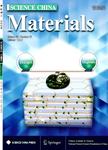Semi-liquid metal and adhesion-selection enabled rolling and transfer(SMART) printing:A general method towards fast fabrication of flexible electronics
基于半液态金属选择性黏附机理的滚动涂覆与转印技术(SMART):普适性柔性电子器件快速制备(英文)作者机构:Department of Biomedical Engineering School of Medicine Tsinghua University Beijing 100084 China Beijing Key Lab of CryoBiomedical Engineering and Key Lab of Cryogenics Technical Institute of Physics and Chemistry Chinese Academy of Sciences Beijing 100190 China
出 版 物:《Science China Materials》 (中国科学(材料科学(英文版))
年 卷 期:2019年第62卷第7期
页 面:982-994页
核心收录:
学科分类:07[理学] 070205[理学-凝聚态物理] 0805[工学-材料科学与工程(可授工学、理学学位)] 0702[理学-物理学]
基 金:partially supported by the National Natural Science Foundation of China Key Project (91748206) Dean’s Research Funding and the Frontier Project of the Chinese Academy of Sciences
主 题:Ni-EGaln semi-liquid metal fast fabrication adhesion difference flexible electronics
摘 要:Recent breakthrough in eutectic gallium-indium alloy has revealed its great potential in modern electronic engineering. Here, we established a general method towards super-fast fabrication of flexible electronics via semi-liquid metal and adhesion-selection enabled rolling and transfer (SMART) printing on various substrates. Based on the semiliquid metal and its adhesion-difference on specifically designed target materials, we demonstrated that the rolling and transfer printing method could serve to rapidly manufacture a wide variety of complicated patterns with high resolution and large size. The process is much faster than most of the currently existing electronic fabrication strategies including liquid metal printing ever developed, and the cost either in time or consumption rate is rather low. As illustrated, a series of functional flexible and stretchable electronics such as multiple layer and large area circuits were fabricated to show their superior merit in combination with electrical conductivity and deformability. In addition, it was also demonstrated that the electronics fabricated in this way exhibited good repeatablity. A most noteworthy advantage is that all the fabrication processes could be highly automatic in the sense that user-friendly machines can thus be developed. This method paves a practical way for super-fast soft electronics manufacture and is expected to play an important role in the coming industry and consumer electronics.



